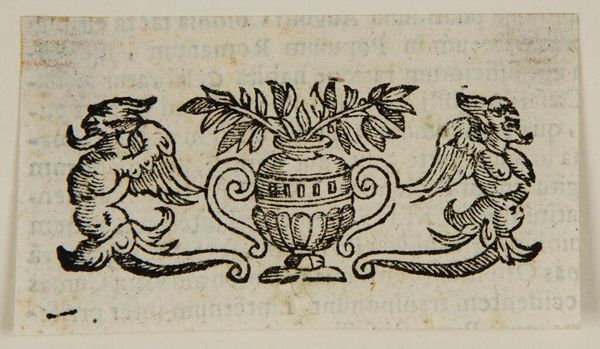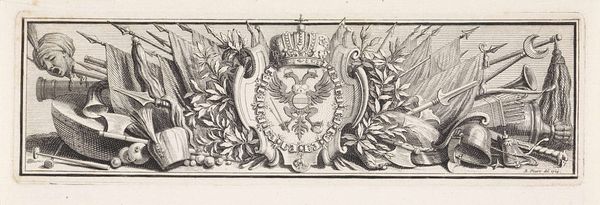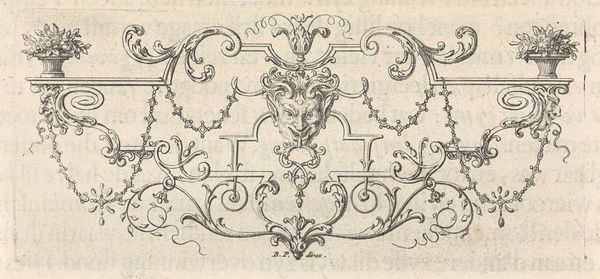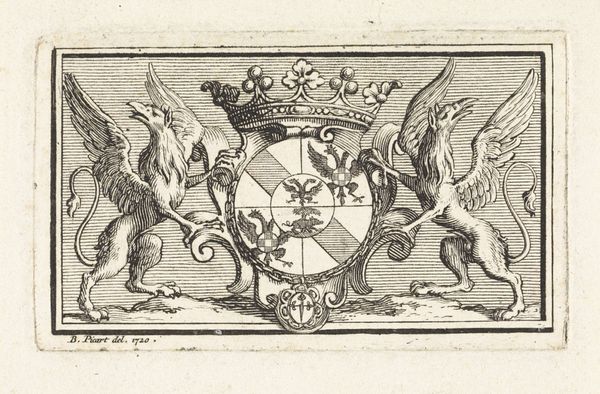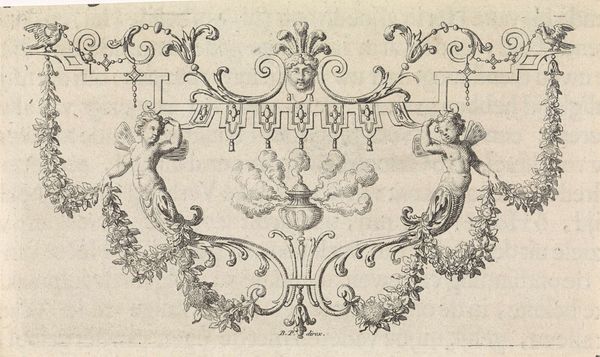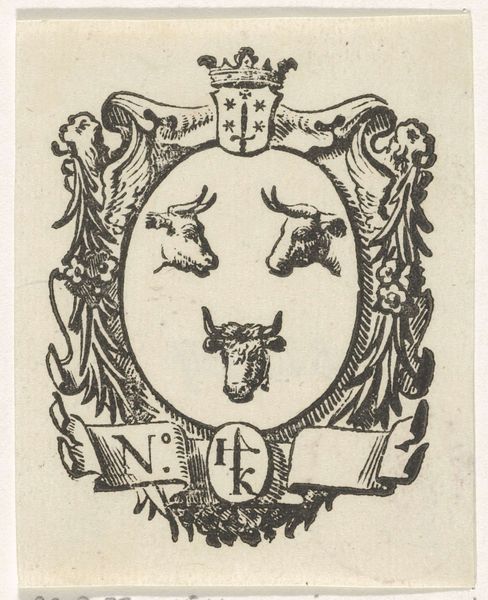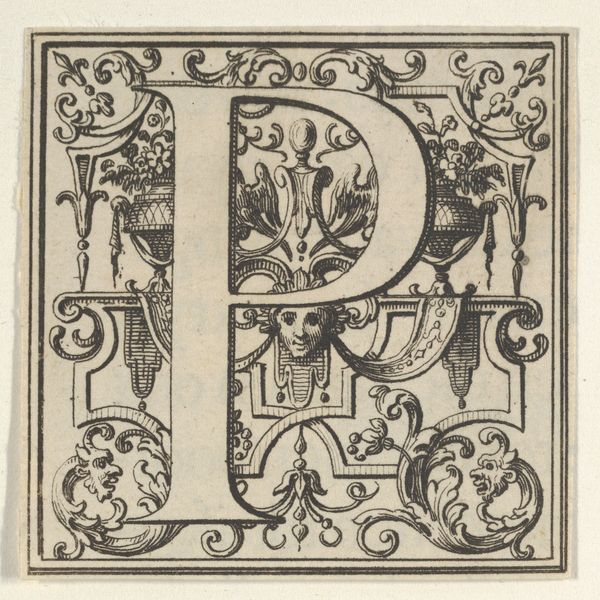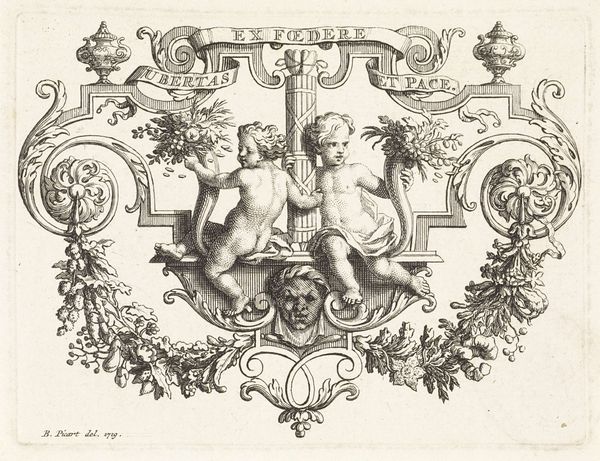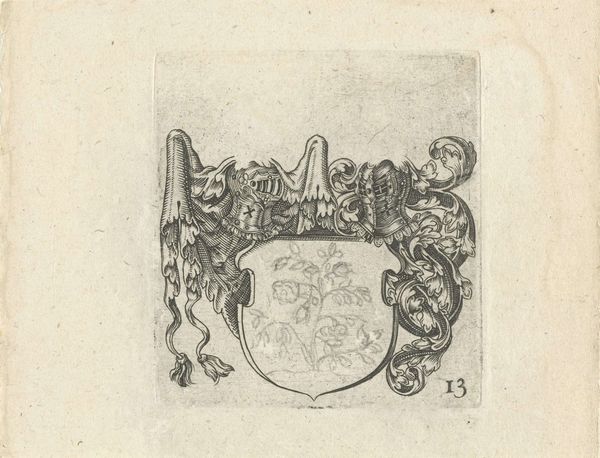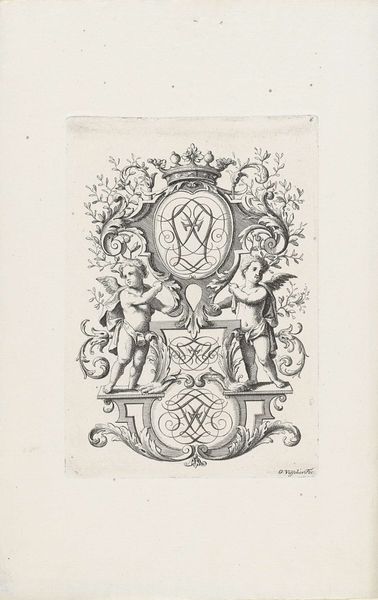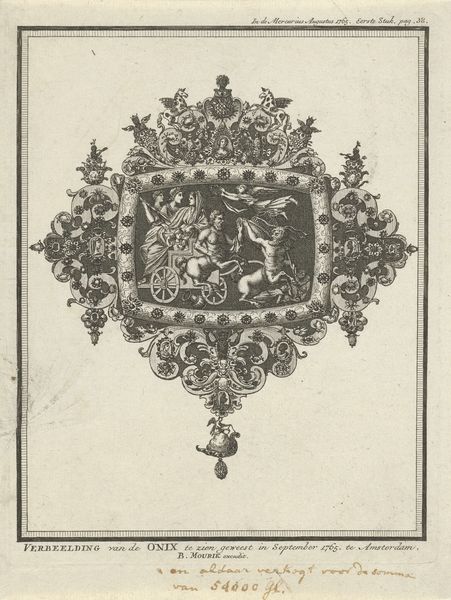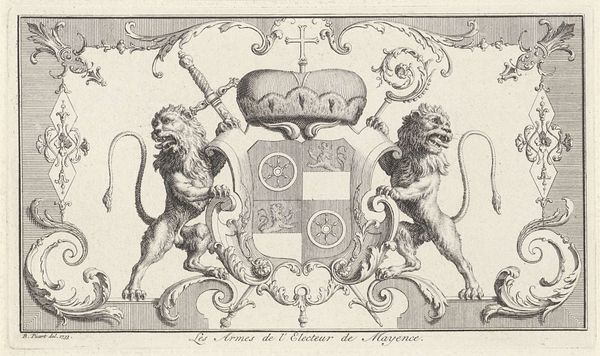
drawing, print, engraving
#
drawing
#
baroque
# print
#
old engraving style
#
form
#
line
#
decorative-art
#
engraving
Dimensions: height 62 mm, width 152 mm
Copyright: Rijks Museum: Open Domain
Curator: This print from around 1725 is titled “Vignet met putti aan weerszijden van een wapenschild” or "Vignette with putti on either side of a coat of arms," and it is attributed to Frederik Ottens. Editor: It strikes me as playful, yet undeniably tied to power. Those cherubic figures holding up a crest, it’s a bold statement of lineage. Curator: Absolutely. These kinds of heraldic vignettes were used frequently in the Baroque period. Prints like this one show the cultural significance of family history. The piece becomes not just art, but propaganda of sorts, reflecting ideas of class and privilege. Editor: It also uses really classic imagery—the putti feel almost stock at this point. Can we look at what those images represented during that era? Were they only for displays of nobility? Or could they signify anything more personal? Curator: The putti serve both aesthetic and symbolic functions. Aesthetically, they fill space, soften the lines, adding to the decorative quality characteristic of the period. But symbolically, the cherubs also bring an association with innocence, purity, and even divine favor, therefore legitimizing the authority that the coat of arms signifies. Think of the piece's historical trajectory: such vignettes found a role across everything from formal invitations and official documentation to marking ownership in a nobleman's private book collection. The use, though seemingly harmless, subtly entrenches systems of inherited power. Editor: Yes, it's an assertion of "divine" right through the trappings of cute babies and elaborate scrollwork. What I find most interesting is the fine detail. Looking at it closer, you notice how expertly it's rendered. The details are sharp and distinct despite the delicate shading and intricate line work. How was it achieved? Curator: The print is achieved through engraving, a technique that would allow Ottens to create precise details. Such craft was prized and reflects the dedication and skill required in producing reproducible images, expanding their influence, but within certain elite circles. The Rijksmuseum, holding this work today, now challenges and investigates that power structure through contextualisation. Editor: Placing it here really helps unravel the historic dynamics around displaying family legacy. Thanks to your perspectives, what first seemed to me like simple Baroque decoration, becomes a narrative about how authority and self-image were actively fashioned through artwork.
Comments
No comments
Be the first to comment and join the conversation on the ultimate creative platform.
